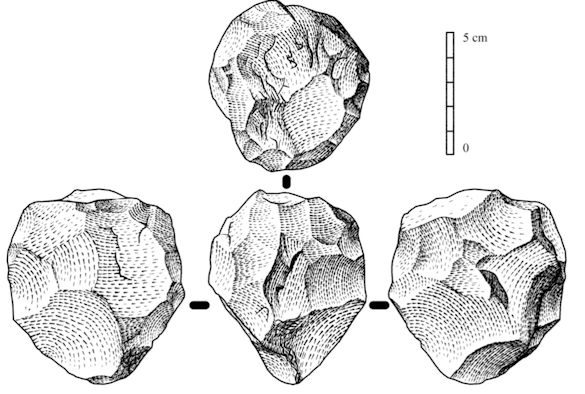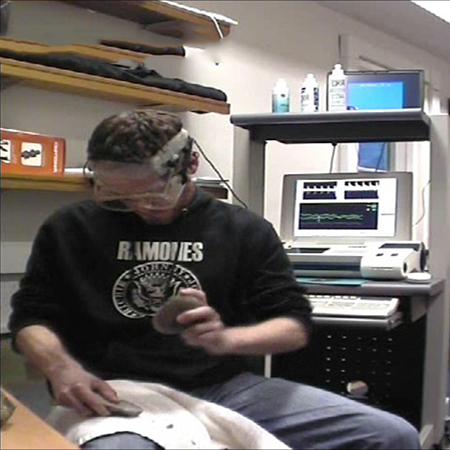
Film footage used in a research study by the University featured in a new art exhibition held in London.
The exhibition `Oldowan’s Offspring’ by Paola Bascon explored the symbolic value of stones and the prehistoric encounters of human beings with stones. It examines the origin of the spoken word and its connection with the development of prehistoric stone tools.
Alongside gathered material, sound and installation, the exhibition featured video footage from a research study conducted by the University in 2013.
The research, published in PLOS ONE, used film footage of expert stone tool makers (flint knappers) undertaking a stone tool-making task and a standard language test whilst their brain blood flow activity was being measured using functional transcranial doppler ultrasonography .
The research was conducted by Dr Georg Meyer, from the Department of Psychological Sciences and Dr Natalie Uomini, formerly with the University’s Department of Archaeology during the study, but now at the Max Plank Institute for Science of Human History.
The study found that the same brain activity is used for language production and making complex tools, supporting the theory that they evolved at the same time.
Dr Meyer said: “What, if anything, sets us apart from other animals is an interesting question. Language and tool use – Oldowan tools created some 2.5 million years are the oldest examples we know – are obvious examples that are commonly cited. Perhaps it is art that makes us ‘human’. The idea isn’t new, Aristotle wrote that, as ‘rational animals’, we live by art and reasoning. It’s great to see the two combined!”
Paola Bascon lives and works in Berlin and La Paz. Her work can be defined as a curatorial and artistic practice about syncretistic rituals.
The exhibition Oldowan’s Offspring took place at Playground in London Ltd from 17 November until 19 November. Further details about it can be found here: http://playgroundlondon.co.uk/Oldowan-s-Offspring
